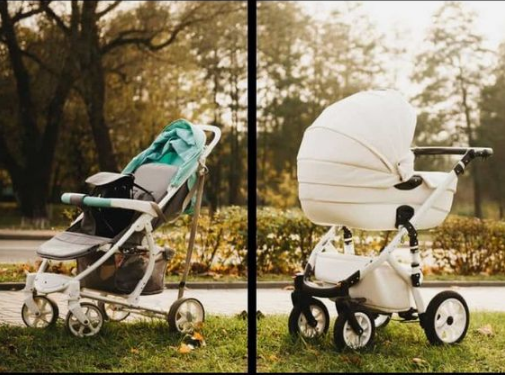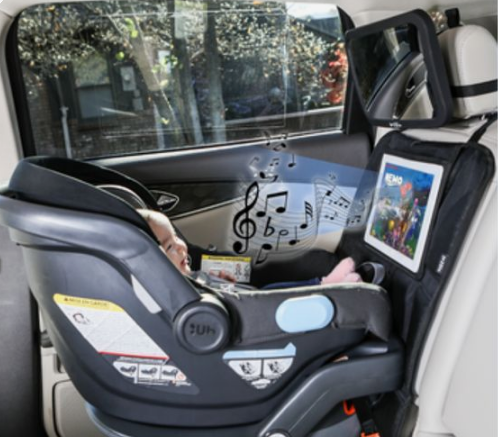How to teach baby to sit up? 5 guaranteed steps from a mom
By: evelyn parkar * Updated 9 August 2024
Hello, folks. Watching our babies grow in the journey of life is the most beautiful feeling; coming home from the hospital and rolling over for the first time, tummy time activities are essential for all babies. Today, let’s talk about one of the hundreds of milestones of a baby: how they can learn to sit. All three of my children begin to sit up between about 4 to 6 months with light support, such as sitting on a couch with a cushion behind their back. And usually nine, month-old baby starts sitting officially. We don’t wait for mothers to buy a high chair quickly but we learn when can baby sit in a high chair and let the children sit at the kitchen table and have breakfast. I’m very keen for all of my three children to learn to sit down soon so I try to learn something new for all three, and it’s even better to see new things researched over time. To be learned, I will tell you the essence of what I have learned from the experience of my three children: how you can teach your baby to sit. It will not be only Google and YouTube research, but it will also include mothers from different regions on Facebook, with whom I keep talking, and the experiences of pediatricians of the country. But I can’t find this type of personal and professional help on YouTube.
So, let’s get started!
When do babies start to sit?
The first and most important thing that I want all the mothers of the world to know is that you know when babies start sitting. You should know the correct age and time of sitting for your newborn. Just a few days ago, I took Jack (my younger son) to the doctor, and there was a woman; in my experience, she was a new mummy, and she was upset about her three-month-old baby girl not sitting with the doctor. What was happening? I talked to her and found out that someone has made her a mess guide, and she is worried because her wonderful and healthy daughter is not sitting. Then the doctor comforted her, and I also explained that your daughter is now she is tiny, and now it is tummy time, so every baby is unique; there is no need to worry. she is don’t know about her girls new born stage. and when it is end.
From 4 to 7 months, the babies starts sitting sometimes with support and sometimes by themselves. By the age of 9 months, the little one begins to sit properly without any support.

Signs that will help you that your baby is ready for the sit up
The most significant sign of a child being ready to sit is that he can hold his head and lift his head that’s it. Make tummy time enjoyable for them to enjoy. Tummy time strengthens the baby’s back, neck, and stomach muscles, which help them sit up. But often, parents don’t have complete guidance Because babies hate tummy time. And they don’t how to handle when baby hates tummy time.
1.Assisted sitting
My favorite method is to try to sit my baby with slight support on my lap support the baby with my legs, and hold the position for a few minutes until the baby is ready to sit. are going. Another way of sitting on my lap is that I sit my baby on the floor or couch and spread my legs around the baby’s body. It strengthens the baby’s upper body and makes sitting up easier. In the beginning, Jack needed more support and would provide support by wrapping his arms around his legs and ribs so that he could sit up quickly. Because if the baby falls once or twice or gets hurt, then he starts to fear. Therefore, I always try to make these milestones of the baby easy and pleasant for him.

2.Less support in assisted sitting
After some time of sitting, your baby starts to control his back, head, and trunk more than before. Just at that time, I sit on my lap or the floor and remove my hands from around the children’s ribs and also remove the circumference of my legs from around them, but even then, the children are not ready to sit completely, so I place a light hand below their ribs at the beginning of their hips so that they practice sitting more. I moved John (my first son) very quickly for him to remove the arms and lower the support but he kept falling around. It gave me experience, and I maintained support on her hips, which gave him control over sitting. Then, it was time for the next step. you should sing some songs, rhyms and other things. But not give them permission to watch mobile ,tablet or TV. this is not a good thing for your baby to watch tv.
3.Train your baby to sit in a dynamic position
I like to spend part of the day with my children. When I finish everything, I give my full attention to the children. And I love teaching John, Mary, and now Jack to sit. After the two methods mentioned above, what should be done now when the baby learns to sit to some extent? John came here and stuck for a whole month. Then I got worried, and I contacted the physiotherapist about what I should do now. He was 60 years old experienced person and I am very saddened by his death. when I discuss Jack’s condition to him , he said to me I now have to make John sit on my lap and tilt him to one side so that this happens; the child immediately realizes the danger and tries to sit upright. Similarly, you have to bend the child on both sides so that he can try to strengthen his balance on both sides. And believe me! this method helps me a lot to train Jack to sit.
Jack’s physiotherapist said that the baby’s mouth should be outside my lap while sitting on my lap, and then I should practice tilting the baby from one side to the other. But I spent part of the baby’s tummy time sitting on the exercise ball, so why not try this dynamic position on the ball and see how it would be? And I was surprised when John did this activity laughing. His laughter used to be my favourite part of the day at that time. Similarly, Marry and Jack also enjoyed the dynamic position on the ball more than the lap. So, give your baby this dynamic exercise if the baby is stuck. You will get him ready to sit very soon. yayyy
I found this video about Dynamic position, and it will helps you to understand the position of dynamic sitting with or without toys. Awww, this baby’s laugh and giggling reminds me my own babies laugh.❤️
4.Dynamic position with toys🪀
Our children are toys for us; by playing with which we are happy, such children also need toys to be happy. Did you know that with the help of these toys, you can help your little one to sit? Yes! You heard precisely right my lady. All you have to do is spread your legs and keep the baby in front of you.
keep a toy from a little distance from your baby and put your hands on the baby’s hips and help him move forward. By doing this, the baby tries to hold the toy and sit back. Now, you have to give a little support so he does not fall and sit back comfortably. By doing this exercise daily, the baby gets better at sitting. You will feel that by doing this activity daily, the baby has improved a lot, and he needs your support less and less. you need to be careful and make sure that a little toys should keep away from your baby because babies usually put everything on their mouth. And you should try to know why baby put everything in the mouth.
5.Reduce your support
Once again, sit your baby on the floor with his face facing out between your legs and encourage him to put his hands on his legs or a toy in front of him. By doing this, the baby puts stress on his arms, which helps him to sit up. The support of your legs and thighs protects the baby from any kind of injury. You still don’t have to be careless. Because the baby has not yet learned how to sit completely, being an expert in this can cause a baby to fall. Therefore, you must keep a cushion or a pillow on the baby’s side. But at this point your baby try to pick and catch everything, you should be more and more careful at that point to reduce any kind of injury incidents.

Conclusion
In my blogs, I always say that every child is different and develops differently. Therefore, you should not feel inferior when you see any other child. Babies learn to sit by the age of 9 months. Or you are learning to sit. If you think that your baby is not learning to sit even by the age of nine months, then you should contact a therapist or pediatrician. Sometime baby feels tired and their sleep cycle is disturbed so please make sure that your baby sleep cycle is properly managed because babies wake windows by age is the main purpose baby feels tired.
FAQ’s
What is the right age for the bay to sit up?
It’s completely normal for your baby to need your support to stand up from 6 to 7 months. By 8 to 9 months, they typically start sitting without support. Remember, every baby develops at their own pace. If you have any concerns, don’t hesitate to seek advice from a childcare provider.
When should you worry if the baby is not sitting up?
If the child cannot support his head and neck by ten months and shows no signs of sitting, you should consult a pediatrician immediately. Late sitting in children is often due to the slow development of their motor skills.
Is sitting too early bad for babies?
Typically, babies start sitting around three months of age. At this stage, their neck and head control is still developing, making them vulnerable to falls and potential spine injuries if they sit without support. This underscores the importance of not rushing the sitting process.






